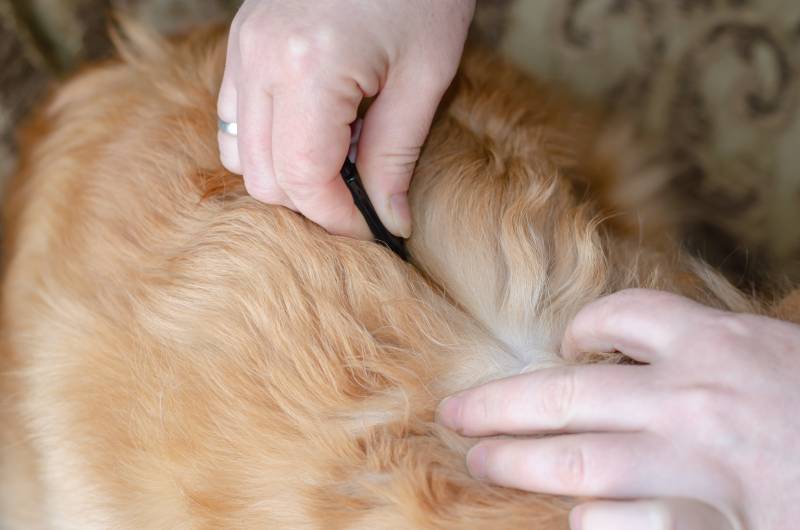
Fleas are annoying, frustrating, and ubiquitous, so it is likely your pet will run afoul of them at some point. Fleas don’t just cause problems for your pet and your home; all members of the household can be affected too. These pesky bugs feed on blood by biting the host they jump onto (i.e., you or your pet!) and, with most houses using central heating over winter, have generally become a year-round problem, rather than just a summer issue.
Not only will they make your pet itch, but they will also nip at you, particularly around your ankles, for their food. Fleas can cause significant health problems for your pet, such as skin conditions and anemia. No one wants or needs these guys around, so how do you get rid of them?

What Are Fleas?
Fleas are wingless, jumping insects, visible to the naked eye. They have a life cycle of around 3–4 weeks, although this may be quicker in warmer weather. The flea has four stages within the life cycle: egg, larvae, pupae (cocoon), and adult. It is thought that 95% of the flea population consists of eggs, larvae, pupae, and newly hatched adults in the environment, while only 5% of the flea population is actually on a host (ie. your pet!).
The cat flea (Ctenocephalides felis) is the most common and troublesome type of flea found in the USA and, despite its name, affects both cats and dogs, and won’t mind biting humans. Fleas multiply rapidly in the environment and in large numbers. This can make getting rid of them feel like a never-ending battle, so what are some of the best ways to get rid of these unwanted parasites?
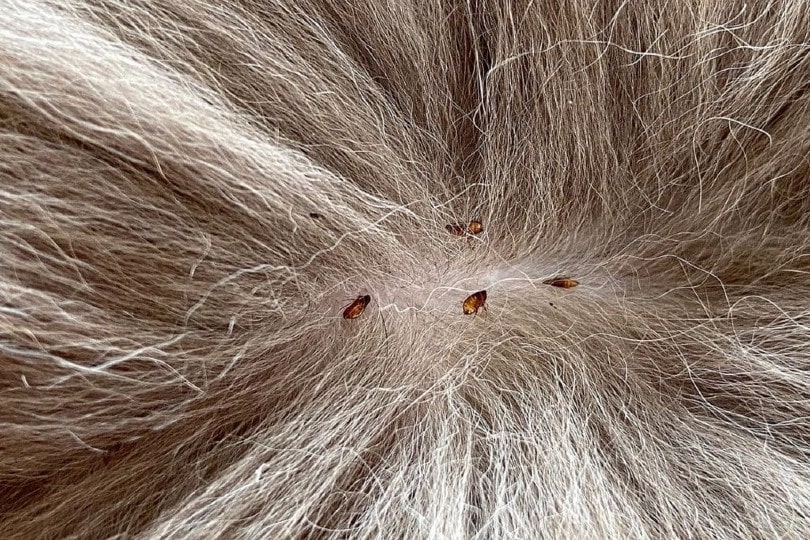

The 8 Effective Ways to Get Rid of Fleas
Fleas affect even the cleanest of homes and pets. Once you have spotted signs of their presence, the key to getting rid of them is to act quickly. Remember, not all pets are the same, and some require different treatments and methods than others, so always check with your veterinarian first before making your choice.
1. Use a Prescription Flea Treatment
Prescription flea treatments are available from your veterinarian. These easy-to-use and ready-to-apply products are the best option to use, and they treat both existing fleas and prevent them from returning in the future. There are separate cat and dog formulations, and all pets in the household must be treated, even if you only saw one flea or flea dirt on one pet. Most preparations will last a month or more, and many of these will also kill other common parasites like ticks and lice.
As medicine evolves, it is likely more choices will be added to the already numerous prescription products available, but your vet can help you decide and choose the correct flea treatment for your pet.

2. Use the Right Products
Although many other types of products (aside from vet-prescribed flea treatments) can be bought online or in pet stores, and often at a cheaper price, they are usually less effective formulations or ingredients. These include things like shampoos and sprays. It is worth discussing these types of treatments with your vet should you be drawn to this option.
Do not use old products that have passed their sell-by date, and double check you are using a species-specific treatment. Some dog treatments contain an ingredient that is highly toxic to cats and can produce a severe reaction.
There are many home remedies and homoeopathic options for dealing with fleas, but be cautious about using them. Some remedies can actually be quite harmful to your pets, and some are just a waste of time and money. If you are keen to employ more natural products in your fight against fleas, talk to your vet about the safest and most effective strategies. In most instances, it is far better to use a prescription product to get control of a flea problem before moving onto natural remedies to try to keep them at bay.
3. Treat Your Home
It is necessary to treat your home with an environmental spray or treatment proven to work against all cycles of the flea’s life. Failing to treat the home or environment can potentially mean you will have a constant flea problem that never goes away – as we mentioned, 95% of the problem is in the environment, waiting to jump onto your pets. There are numerous types on the market, and you can talk to your vet or a pest control company to find out what will work best for you.
There are a number of sprays and powders that you can use around the home, as well as a few home remedies to help keep fleas at bay.
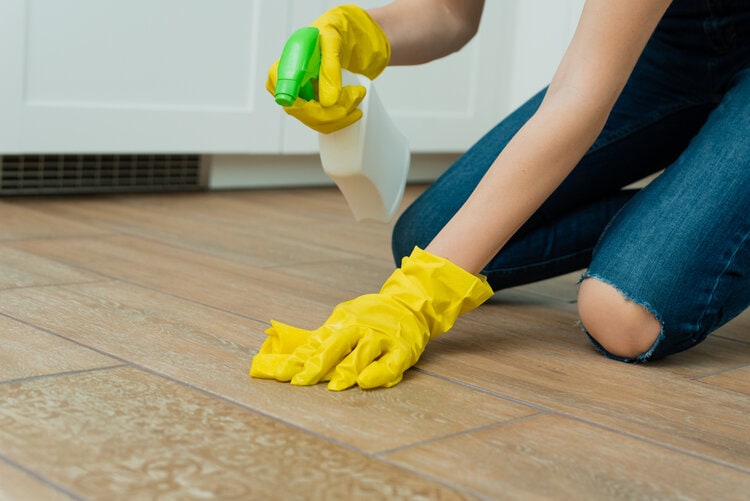
4. Vacuum, Clean and Steam
On top of your normal household cleaning, it is recommended to take the following actions to assist in effectively ridding your home of fleas and all its life cycles.
5. Groom Your Pet Regularly
Regular grooming of your pet can help with spotting and tackling fleas. Use a flea comb to check for fleas or flea dirts*. Knotted fur and dreadlocks are a great place for fleas to burrow into and hide, so keeping your pet’s coat clean and tidy can really help stay on top of things.
Flea shampoos can help to kill or repel fleas, but be careful if you are also using any spot-on treatments; you don’t want to wash away your flea treatment with your shampoo!
*HOT TIP: If you’re not sure if you’re seeing flea dirt (flea poop) or just regular dirt, use a flea comb to remove some, and then wet it in a white sink or with some wet cotton wool. If the dirt turns rust red, it’s digested blood = flea poop!
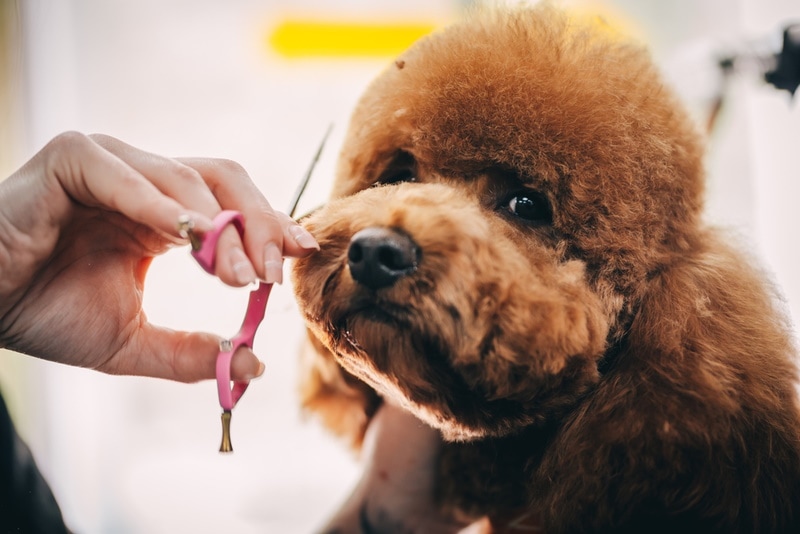
6. Routine Checks
It is prudent to check your pet and their fur once a month for any signs of fleas, such as:
If you do notice any of these signs, take action with treatment and be sure to visit your veterinarian for your pet’s regular health check-ups, as they will always check for the presence of any fleas too.
7. Use Preventative Flea Treatment
The most effective way to get rid of fleas is to prevent them in the first place, as they can become a real problem to get rid of once an infestation occurs. In the past, fleas were associated with the summer or hotter months, but due to many conditions, such as central heating and increased weather temperatures, fleas are really a year-round issue. Therefore, it is advisable to apply preventative treatment all year round.
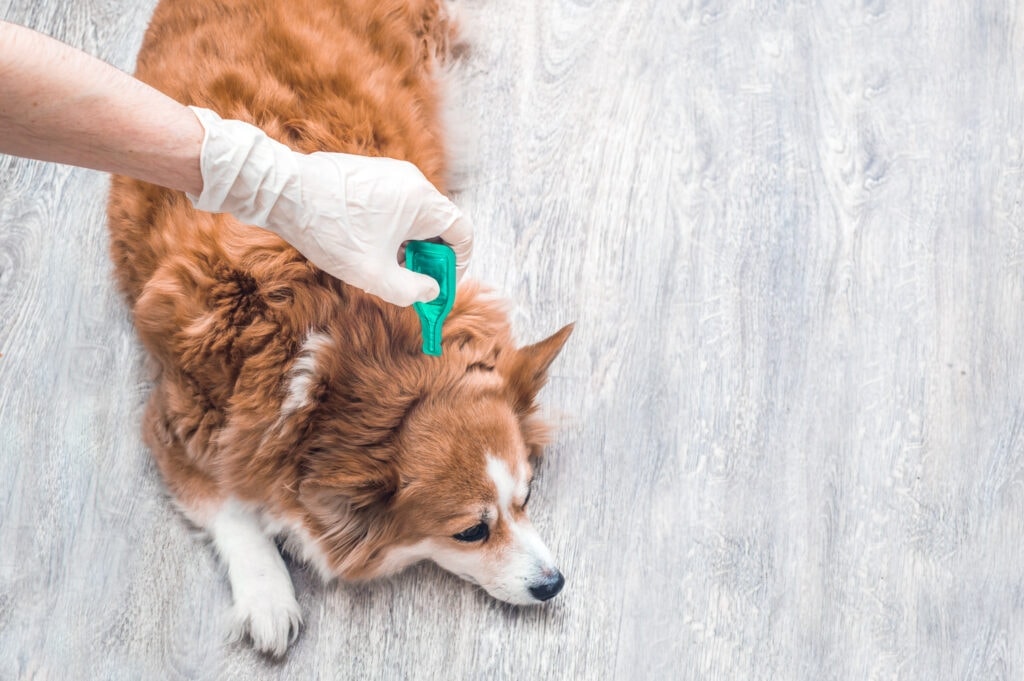
8. Take a Stroll Around the Yard
Overgrown shrubs, woodpiles and rubbish heaps can be wonderful places for fleas to breed. Do a perimeter check of your home, and try to clean up/move away anything away from your walls that might encourage fleas (or their rodent hosts) to gather. You might even take some cedar chips or diatomaceous earth to sprinkle around the house, to help repel or kill fleas.

Conclusion
Fleas have been around and bugging our pets for thousands of years, and they aren’t going anywhere! Fortunately, there are effective treatments and help available to both treat and prevent them. Although there are quite a few natural remedies out there that claim to eliminate fleas in your home and on your pet, most will not be sufficient when dealing with a significant flea problem. They can be useful aids, or helpful for repelling fleas from the home, but in order to get good control of any flea population, you should always start at the vet.
Fleas can be a real problem once they’ve set in, so be aggressive with treatment when you see them, or even better, start your pets on a preventative treatment now.
Featured Image Credit: Dmitriev Mikhail, Shutterstock

